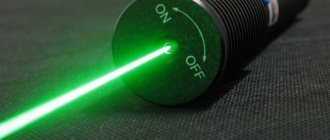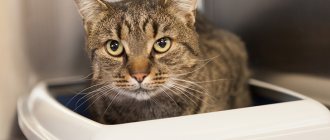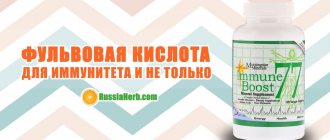If your dog has eaten bones, do not try to make your dog vomit. Spasms and sudden contractions of the walls of the stomach and esophagus can cause the bone to scratch or damage the stomach and throat.
Damage to the gastrointestinal tract can cause your dog to experience diarrhea with impurities. In this case, you need to urgently contact a veterinary clinic. It's too late to self-medicate here.
But if your dog has eaten bones, and time has not yet passed, I can recommend the proprietary method of a veterinarian with 20 years of experience, Olga Korkh.
Fortunately, I didn’t have to use this method myself. But I think that if your dog has eaten bones, then to help your beloved furry friend, you can try to do as Olga advises.
Take a church candle. Yes, yes, church. And the point here is not at all about belief in miracles and not about your religion. Just candles from the store will not help here. They are made from paraffin and melt at a very high temperature. And church candles are made of wax, which melts at body temperature.
Feed pieces of the candle to your pet. The eaten wax melts inside at body temperature and envelops the sharp bone. Try to feed the candle to your pet as quickly as possible after the dog has eaten the bones. How to give a dog a pill, see HERE.
How many candle “tablets” to give an animal depends on the size of the dog. If the dog is small, a couple of centimeters of candle is enough. If the dog is large, then you can feed the whole half of the candle at a time.
Carry out this procedure three times a day. Feed the dog a candle, wait an hour for it to melt and envelop a bone or other sharp object.
Then be sure to feed your pet. Feed as usual. Never starve your dog. A hungry animal's bone will go
Why do you need to rinse your dog's eyes?
Your dog's vision needs to be monitored daily.
. This will help to identify and prevent the development of eye diseases of bacterial and viral origin at an early stage. Which can be dangerous and can affect the animal’s body as a whole. Tea removes redness well, relieves eye swelling and fatigue.
Such procedures are especially useful for long-haired breeds of dogs, those whose hair falls over their eyelids (lapdogs, Yorkies, Giant Schnauzers, Bobtails and others). If hair gets in their eyes, their eyes may water.
It can be heard saying that the eyes are “running”. Eye discharge is a signal that the dog is not healthy. This may be due to viral diseases, colds, digestive tract or metabolic disorders. You can't cope here with tea alone. It is necessary to reconsider the animal's diet. Feed your dog a balanced diet and this problem can be avoided.
If you suspect that chemicals, dust or sand (earth) have gotten into your dog's eyes, provide first aid! Wash your four-legged friend's eyes with any tea solution.
If an animal has an eye disease and the doctor has prescribed eye drops, then tea rinsing is a necessary procedure before using medications.
First aid
In case of boric acid poisoning, first aid is as follows.
- If a child has eaten a dangerous substance in front of you, you need to induce vomiting and rinse the stomach with plenty of water.
- Giving activated carbon is ineffective because boric acid is poorly adsorbed.
- Take a laxative: sodium sulfate, magnesia, lactulose.
- Drink more fluids and stay hydrated. You can use rehydrating solutions: “Regidron”, “Hydrovit”.
If a small child is injured, be sure to consult a doctor.
We wash the dog's eyes. How to prepare a tea solution
To prepare the tea solution, you will need “sleeped” or weakly brewed black (green) tea. Many owners use regular pharmacy chamomile for these purposes. The prepared solution must be warm
IT IS FORBIDDEN
: Rub dogs' eyes with a strong or cold tea solution.
Disposable tea bags left over after drinking tea are quite suitable for eye rinsing. Green and chamomile infusions have an excellent antibacterial effect.
Chamomile tea
Chamomile infusion relieves swelling well (pour a bag of chamomile into 200 grams of boiling water) Let it sit for 15 minutes. Moisten a cotton swab. Apply to eyes.
Chamomile compress
If your dog has inflamed eyes, it is useful to make a chamomile compress. Pour dry chamomile into a small bag (you can use a handkerchief). Brew for 5-10 minutes. Apply warm to eyes. At the end of the procedure, wipe your eyes dry.
For children
In childhood, boric acid can only be used in a hospital setting under the supervision of a medical specialist. Monitoring the concentration of the active substance in the blood is required. If a child has impaired kidney function, the medicine should not be used.
For children over 15 years of age, boric acid is recommended in the form of liniment and solution, but on the condition that the total dosage, regardless of the duration of the therapeutic course, does not exceed two grams - for the entire period, and not per day.
How to wash your dog's eyes
Before you begin eye care, wash your hands with antibacterial soap. Prepare everything you need:
- Cotton wool (cotton swabs), sterile gauze wipes.
- A clean bowl with warm tea solution or tea bags.
Pat your dog on the head and let him sniff your hands, the solution and the cotton wool. She needs to feel like she won't get hurt.
. Soak a cotton swab in the tea mixture and wipe the animal’s eyes from the outer to the inner corner. You can make small lotions. Hold your four-legged friend's face in your lap. If the dog is small, place it on the table.
It is important to know:
- A separate swab should be used to wash each eye.
- The brewed tea solution must be freshly prepared.
- You should not put tea in the eyes of dogs.
- After finishing rinsing, wipe the animal's eyes with dry, clean gauze.
Be careful - a dog's eyes are a very fragile organ!
Adults wash their eyes calmly. They quickly get used to this activity. A small puppy may resist at first. Do not scold him or forcefully wash his eyes. Release the animal and try again in 15 minutes.
Tea solutions tend to stain animal fur. This is especially true for black tea. If the dog has a white (light) color, then it is advisable to use green or chamomile teas.
It should be remembered that self-medication is dangerous. Dog breeders use tea rinses as a preventive and hygienic measure. Tea procedures are not able to cure an animal from an acute viral disease. Do not neglect the help and advice of a veterinarian. Keep medicated drops for animals in your first aid kit.
Only regular and caring care for your pet will preserve its health and visual acuity for many years.
Each owner will be especially grateful for the cheerful eyes, wet nose and wagging tail of a beautiful and healthy dog!
#advice-from-the-vet-point
Low humidity in city apartments, an abundance of house dust in dry apartment air, city dust mixed with concrete dust, residues of fuels and lubricants and de-icing agents - all this does not have the best effect on the condition of the eyes of our pets.
Therefore, even the eyes of our four-legged city dwellers, healthy from allergies and infections, often need additional care.
Some naturally healthy and adaptable animals do not require eye care throughout their lives. Others cannot last even a day without the help of their owner.
This can only be determined in relation to the conditions in which your dog or cat is currently kept. When moving to another place of residence, the condition of the eyes (if it is not an infection) can change significantly without human intervention.
Signs of eye problems are often visible to the naked eye. The main thing is to pay attention to them in time:
- Dry crusts quickly accumulate in the inner corner of the eye and have to be removed by rinsing or simply using your finger.
- The eyelids are swollen and “stuck together.”
- Excessive tear production is observed, and moist “tracks” form under the eyes.
- The discharge from the eyes is thick, it dries on the eyelashes or is visible on the surface of the cornea in the form of translucent clots.
If you notice any of the above in your pet, then he cannot do without your help.
Please note that all further recommendations are given
for animals
that have normal body temperature, are active, have a good appetite and normal level of thirst, preserved stool and urination, and in general - for those that are
clinically healthy
.
If your pet’s condition gives you any concern, contact your veterinarian immediately, because discharge from the eyes can be only one of the symptoms of an infectious or other serious disease.
Discharge from the eyes can be a sign of a serious illness!
What is used to treat the eyes of dogs and cats?
The simplest thing you can use is saline solution (sodium chloride 0.9%). It can be used to wash the eyes in unlimited quantities and as often as necessary. It should also be used when you suspect an eye injury.
at your pet. In this case, other means can be downright dangerous!
If you suspect an eye injury, wash off the crusts and rinse the eye with sterile saline or, as a last resort, boiled water. It is dangerous to use other remedies without consulting a doctor!
In addition, to care for your pet's eyes, you can use special lotions or drops designed specifically for eye care. These are lotions already familiar to us, “Vetoquinol” or “Global-Vet”, as well as the “Phytoelita” series (Veda LLC) and “Diamond Eyes” drops (“Agrovetzaschita” - “AVZ”). Be careful, sometimes pets may have an allergic reaction to a specific lotion. In this case, the use of such lotion should be stopped immediately.
Read labels carefully and use products exactly as directed.
I will also voice a finding from the owners of my patients, confirmed by years of successful observations: you can take care of your pet’s eyes using contact lens fluid. The composition of these liquids provides effective disinfection, mechanical rinsing of irritants, moisturizing and protecting the cornea and conjunctiva of our pets' eyes.
Herbal infusions and teas, can they be used to wash the eyes?
Separately, I would like to say about infusions of medicinal herbs for washing the eyes of pets: chamomile, sage, calendula, green tea, etc. Such infusions are very useful, however, there are two important points: the possibility of an individual allergic reaction to infusions and the need to carefully filter or settle the infusion before use, so as not to injure your eyes with the remains of herbs.
To preserve the benefits of infusions and not spend a lot of time on preparation. You can make an herbal infusion and freeze it into cubes. As necessary, infusion cubes can be thawed (for example, by diluting with a small amount of boiling water - in this case, the frozen infusion should be more concentrated than necessary for consumption) and used to wash the pet's eyes.
Separately, there are questions about whether it is possible to wash the eyes of dogs and cats with tea?
And, if possible, then what kind, fresh or “sleeping”, standing? And is it possible to use tea “in bags” for this?
Tea is a herbal infusion like the others. Fresh green and black tea have an irritant and antimicrobial effect. Standing tea contains tannin, a tanning and disinfectant substance. It is not recommended to rinse your eyes with fresh tea due to its irritating effect.
“Sleeping” standing tea can be used once or twice (before purchasing a more suitable product) to wash the eyelids of a dog or cat in “field conditions” when they are inflamed. Why should tea be “sleepy”? So that the concentration of tannin in it is not higher than desirable.
Like any other herbal infusion, tea must be filtered. The easiest way is to wrap wet “sleeping” tea leaves in several layers of clean cloth or sterile gauze (bandage) and rinse your pet’s eyelids, removing crusts of discharge from them. Try not to get any excess tea deep into your eyes.
Can tea bags be used? This is highly undesirable due to its poor quality and the abundance of “tea dust” that can get into the eye even after filtration.
Do not use tea bags to wash your eyes - it is dangerous!
How to wash eyes for dogs and cats
It is advisable to wash your pet’s eyes from 1 time a day (at night) to 3 times a day (for example, after each walk), generously moistening a cotton pad with the liquid of your choice and moving it along the eyelid towards the inner corner of the eye. Possible directions are from the outer corner of the eye to the inner, around the eyes, from the center to the periphery.
Only those products that are intended for this purpose can be injected directly into the eyes!
Read the label carefully and remember that “for washing the eyes” and “for caring for the hair around the eyes” are not the same thing!
When washing your eyes, try to use solutions and lotions at room temperature, or better yet, at body temperature. Cold solutions can cause discomfort in your pet and problems with his eyes in the future.
Do not use cold eye washes!
Strictly observe the expiration dates of lotions and solutions - there is no need for extra germs in your eyes!
If washing within 3-5 days does not cause a significant improvement in the condition of the eyes and a reduction in discharge, be sure to consult a veterinarian
.
If the advice of a general practitioner does not help within a week, do not wait for “sea weather” and contact a veterinary ophthalmologist
!
Healthy and shining eyes to your pets!
Natalya Troshina, veterinarian (DVM)
Chlorhexidine is a powerful antiseptic based on the active substance chlorhexidine bigluconate. The drug is used as an external antiseptic. They treat the mucous membrane and surface of the skin.
A caring owner of a four-legged pet should periodically wash his eyes. This is done for hygienic purposes. Dogs often develop various forms of conjunctivitis. In this case, you definitely can’t do without processing.
Despite the fact that the drug is not a highly toxic drug, it is recommended to consult a veterinarian before use.
According to the pharmacological classification, chlorhexidine is a broad-spectrum antiseptic. An aqueous solution of bigluconate is perfect for treating a dog's eyes.
Important!
Pharmacies sell chlorhexidine with different compositions. From 0.05% to 20%. To wash the eyes, do not use a solution with a high alcohol content (20%). Don't try to make an aqueous solution. This threatens to burn the mucous membrane of the quadruped.
Prevention
In order to protect yourself once and for all from boric acid intoxication, this substance must be completely removed from household use. Moreover, it is considered a rather weak antiseptic, and for this purpose more effective and less dangerous substances can be used, for example, chlorhexidine, hydrogen peroxide, potassium permanganate. If you are using boric acid to control pests, it is better to abandon such an idea and leave this work to specialized services.
If this is not possible, boric acid (both powder and solutions) should be stored out of the reach of children and animals. Under no circumstances should the container with the drug be stored together with food. The name and method of use must be indicated on the container.
It is unacceptable to lubricate the nipples of nursing mothers and the mucous membranes of children, for example, the oral cavity, with boric acid to combat thrush. If this drug is used as an antiseptic, it is suitable only for adults, and its concentration in the solution should not exceed 4%.
Industry must strictly adhere to safety regulations regarding this chemical compound. Also, you should not use boric acid for self-medication, for example, as part of folk recipes for various diseases. The risk of exceeding the dose or, due to your sensitivity, getting severe poisoning instead of recovery, sometimes with irreversible consequences, is too high.
To eliminate the risk of poisoning, it is worth following prevention, which consists of simple recommendations:
- monitor the integrity of the packaging or bottle,
- keep out of the reach of children and pets,
- wash your hands after contact with acid,
- Use only when necessary, strictly following the recommended doses.
It is important to understand that any intoxication symptoms require immediate medical attention. Self-medication will lead to irreversible and serious consequences.
Why do they do this?
Chlorhexidine is widely used in human and veterinary medicine as a treatment for intact mucous membranes. The drug acts as a local antiseptic. It is recommended to use it to rinse the conjunctival sac.
The solution perfectly relieves inflammation, regardless of what caused it.
If the dog is prescribed treatment with eye drops, then chlorhexidine acts as a step in cleaning the surface of the eye and canals from purulent clots and dry crusts.
Analogs
Similar preparations (structural) - boric liniment, petroleum jelly with the addition of boric acid, a solution of boric acid in glycerin. Analogs for therapeutic effect include drugs that have an antiseptic effect.
Analogues:
- Miramistin;
- Chlorhexidine;
- Brilliant green solution;
- Hydrogen peroxide.
Practice shows that antiseptic drugs that are analogues appear to be safer drugs in comparison with boric acid.
How to wipe properly?
- Prepare everything you need in advance - solution, cotton pads, water.
- The drug must be warmed to body temperature.
- The dog may not like manipulation of its eyes. Especially when this is done for the first time. Therefore, prepare a towel to secure the animal. If the dog is large, you can put it in the bathtub or use the help of another person.
- Before handling, wash your hands thoroughly with soap.
At the first stage of treatment, simply blot your eyelids and corners of your eyes so that the resulting crusts soak a little. After 10-20 seconds, pass the disc again, cleaning the eyelids. If the dog is not sick, then these manipulations are enough to keep the eyes hygienically clean.
When an animal suffers from various types of conjunctivitis, it requires additional cleaning of the conjunctiva and cornea. To do this you will need a small syringe without a needle.
Draw the warm chlorhexidine solution into the syringe. Its tip should be directed towards the inner corner of the eye. This will cleanse both the dog’s conjunctival sac and cornea. Use a gentle, smooth motion to press down on the pump. Afterwards, wipe the closed eyelid with a dry cloth in the direction from the outer corner of the eye to the inner.
Benefit
Boric acid has a number of useful properties: antimicrobial, drying, antifungal, antiparasitic. This leads to a fairly wide range of applications. With its help you can cure:
- Inflammation, pimples, acne.
- Various fungal diseases.
- Pediculosis
- Various forms of pyoderma.
- Diaper rash of the skin.
- Eczema of the skin.
- Conjunctivitis.
- Inflammation of the middle ear (otitis).
As for the last point, an alcohol solution is used to treat otitis media. This is necessary to create a warming effect.
Pregnant, lactating and puppies
Rinsing puppies' eyes with chlorhexidine solution is safe for their health. The procedure is carried out without dose adjustment. You just have to monitor the pressure while flushing. Excessive zeal can lead to trauma to the mucous membrane.
During lactation, the dog is also at risk. Toxic substances from medications can pass into the milk and harm puppies.
The use of chlorhexidine for washing pregnant and lactating dogs does not in any way harm the health of the bitch or her puppies. During clinical trials, penetration of the drug into the systemic circulation was not detected.
During manipulations to treat the eyes of an adult dog with puppies, you should be extremely careful and not give her a reason to be nervous.
pharmachologic effect
A solution of boric acid is a powerful antiseptic that helps disinfect the surface of the skin. The liquid has a detrimental effect on pathogenic microorganisms because it disrupts the tertiary molecule of microbial proteins. The substance helps destroy bacteria, viruses, fungi, and is effective against lichen, lice and ticks.
The medicine is recommended for external use only. Ingestion can be fatal. The lethal dosage for an adult is 15-20 grams, and for a child 4-5 g. When used externally, boric acid is partially absorbed into the circulatory system.
Features of breeds
Certain dog breeds are more susceptible to eye diseases than others. Their appearance is provoked by the structure of the animal’s skull.
Large breeds, such as Great Dane, Shar Pei or Doberman Pinscher, suffer from various types of dislocations and inversions of the eyelids. Animals with a pronounced nasolabial fold (pug, French bulldog) have trichiasis.
Disease of the lacrimal apparatus is caused by congenital pathologies in West Highland white terriers, which is passed on from generation to generation.
Important!
When choosing a dog breed, it is recommended to focus not only on appearance and character traits, but also on diseases that are characteristic of each breed.
What to replace it with?
Chlorhexidine is the only drug that can be used to treat a dog's eyes.
Veterinary pharmacies sell special solutions for four-legged animals. For example - Ai Voss and Ofto-Lavas. Each also contains chlorhexidine digluconate. Additional components and vitamins help moisturize the mucous membrane and promote rapid healing.
You can also prepare a solution for washing your dog's eyes at home. The classic option is to brew black or green tea. But you don’t need to make it too strong, medium strength is enough.
Another option is a decoction of chamomile petals. For the infusion you will need a teaspoon of dried flowers per glass of hot water. After 15 minutes, strain the broth and cool to body temperature. The infusion has anti-inflammatory and astringent properties.
Sodium chloride solution 0.9% is safe for hygienic and anti-inflammatory treatment of dog eyes from purulent discharge and dry crusts formed.
Description
Boric acid is a white chemical powder. When dissolved in alcohol, a clear liquid is formed. Has a number of useful effects when used.
Properties:
- Anti-inflammatory,
- Antiseptic,
- Relieves fungal diseases
- Dries out the skin,
- Helps get rid of lice.
Boric acid is included in many external medicines. The scope of application of the drug is quite wide.
Where used:
- A solution with a concentration of two percent is used to wash the eyes.
- Three percent liquid is used for therapeutic compresses for skin diseases.
- An alcohol solution is often used for inflammatory processes of the hearing aid.
- Boric ointment is used as a medicine for head lice.
- The most common use in everyday life is against harmful insects. Boric acid powder is mixed with boiled yolk. The finished product in the form of balls is laid out in places where pests accumulate. However, you need to carefully monitor that such a “delicacy” is not eaten by domestic cats or dogs.
- Boric acid is present in lens solutions and is used to create soap.
- In crop production, the substance is used as part of fertilizers; it helps increase productivity and reduces the risk of rotting.
The use of a chemical product requires care and caution to avoid poisoning.
How to wash your eyes if there are no medicinal drops
There are several liquids that are often on hand. Or they are very easy to prepare. This is quite important because delay can negatively affect your dog's vision.
Of these, the most accessible are:
- Chamomile decoction.
To prepare it, you don’t even have to go to the field to find a plant. Today, pharmacies sell chamomile already packaged in disposable bags. All that remains is to brew them with boiling water and cool until warm. A good option, it has an anti-inflammatory effect. - Drunk tea.
Some sources recommend a very strong, freshly brewed drink. I wonder if the advisors tried washing their eyes with chifir? Yes, it even corrodes a razor blade! And you say - eyes. Only sleeping or lightly brewed tea is suitable for washing a dog's eyes. The ideal option would be green tea. - Potassium permanganate.
The solution should be very weak, pale pink. Approximately 1 crystal per 250 ml of water. Be sure to make sure that the potassium permanganate has dissolved! Otherwise, you risk burning your pet's eyes. It is better to filter the liquid before use. - Aloe juice.
The product is good, relieves inflammation, promotes recovery. But have you seen this substance? It looks like a thick gel or jelly. It will be very problematic to wash the dog's eyes with it. Try diluting the juice a little with boiled water and strain. Then things will go better. - Saline solution.
Sold in every pharmacy, it costs a penny. Buying in ampoules or vials does not matter. Very easy to use. There is no need to filter or strain anything. Just take it and rinse your dog's eyes. - Chlorhexidine.
You cannot rinse your eyes with something purchased from a pharmacy! It needs to be diluted with saline solution in a ratio of 1 to 5. It is most convenient to measure with a syringe. - Boric acid.
You will have to prepare a solution. One quarter teaspoon of powder per 200 ml of clean boiled water. Be sure to filter before use! - Furacilin.
You can order the solution at the pharmacy, or you can prepare it yourself. A 20 mg tablet is dissolved in 100 ml of warm boiled water. Stir thoroughly until completely dissolved.
These are the most popular and effective means to wash a dog’s eyes. But remember that they cannot eliminate the cause of discharge and suppuration. These are not medicines! Therefore, after providing first aid to your pet, immediately go to the veterinarian.
Symptoms of boric acid poisoning
When poisoning with boric acid, symptoms appear in the following order:
- persistent vomiting, often with blood;
- lack of appetite, lethargy;
- diarrhea, which in severe poisoning contains blood;
- cramping abdominal pain;
- sometimes vomit and feces are colored blue-green;
- characteristic redness of the entire skin, especially on the palms, soles, and buttocks;
- a rash is added to the redness, which can be confused with scarlet fever or measles;
- 1–2 days after redness appears, the skin begins to peel off;
- symptoms of damage to the nervous system develop: muscle twitching, trembling, convulsive seizures;
- impaired kidney function: little or no urine;
- swelling in the genital area;
- coma and death.
Kidney function is impaired both due to the direct effect of boric acid and due to dehydration due to vomiting and diarrhea.
General rules
Every dog owner should know some aspects by heart. It is very important to follow them, but it is simple. For example, each eye is washed with a separate piece of gauze bandage or lint-free wipe. It is not recommended to take cotton wool or cotton pads. Invisible fibers can separate from them, which will further irritate sore eyes.
Before the procedure, be sure to wash your hands with soap. Don’t listen to advisers who talk about safeguards and the like. In operating rooms they still use good old laundry soap. Science has not yet come up with anything better.
There are recommendations to restrain the dog before washing the eyes. Nonsense. This will only frighten the animal and prevent the procedure from being carried out. Any dog trusts its owner unconditionally. It’s enough just to talk to her in a gentle voice, let her smell the product and tools. This way the pet will understand that it will not hurt. Afterwards you need to pet him, praise him and give him a treat. Of course, this rule only works when the dog is a member of your family, and not a piece of furniture or a means of earning money.
All washing movements must be strictly from the outside in! Only from ears to nose, and not vice versa. No doubt, sometimes this is not very convenient, especially in long-haired breeds. But there is no other way. And don't try to get the bandage right into your eye. The animal may be in pain.
By the way, if you see foreign particles on the cornea that are not washed off with tears or washing, then do not even think about wiping them with a napkin. You can rub them even deeper. Go to the vet immediately! Or call at home. Otherwise, the dog may lose an eye.
All products, tools and liquids must be warm. Think for yourself - would you be pleased to get something cold in your sore eye? So the dog can get scared.
And further. Nothing has yet been invented more convenient than the simplest syringe for washing. Just control the strength of the stream so as not to hurt the animal.
- lotions
- drops
- solutions
Prices are suitable for any wallet. However, each product works well. But you won’t have to bother with the preparation if something happens. After all, in such an important matter, delay is unacceptable.
By the way, after visiting a doctor, the animal will be prescribed drops or medicinal ointments. But this does not save the owner from washing the dog’s eyes. After all, purulent discharge will not disappear instantly. Therefore, the crusts will have to be soaked and removed for some time. This means that before each instillation or application of ointment, you need to wash your eyes.
Before the procedure, be sure to read the composition of the medicine. For example, some already contain chlorhexidine. This means you cannot use chlorhexidine solution for rinsing.
How to wash a dog's eyes? Not with human medicines to treat eye diseases! Otherwise, you can only do harm. The best solution would be to go to a veterinary clinic. After all, there is a high probability that it was not just a speck or a blow from the wind. Take pity on your pet and show care. Then you will always be pleased with your dog's clear eyes, wagging tail and wet nose.
More information about traps and ultrasonic repellers
Baits are used against cockroaches. These are devices that contain a sticky pad or insecticide inside, and in addition, attractants that attract insects. This type of product is not dangerous for animals, since the poison is covered by the body. It provides only small entrances for insects. The number of poisoned pests will increase if you choose an insecticidal trap. To encourage cockroaches to crawl to the sticky area, any attractive product is left on it.
However, traps of different types are characterized by low efficiency. They are used for mild to moderate infection. Lures do their job well, but only as an aid. When there are a lot of insects, traps do not work.
Ultrasonic repellers are often advertised today. They only get rid of mosquitoes. However, cockroaches and other crawling insects do not generate ultrasound, so the repeller will not help get rid of them. There is no poison in the device, but this does not mean that it is harmless. Staying within the range of ultrasound for a long time affects your well-being. Radiation affects the nervous system, provokes sleep disturbances, and headaches, so it is better not to use the repeller in residential buildings.
Why can dogs' eyes fester?
Most often, dog owners turn their pets to veterinarians for help due to eye disease. Everything happens in stages, the eyes can:
- tear;
- turn sour;
- fester.
Such problems can lead to serious consequences
. It is very important to pay attention to this in time, find out why this is happening and provide timely assistance to the animal. There are several reasons for this condition of the ocular mucosa:
- getting dust, dirt, foreign bodies into the eyes;
- infections;
- injuries;
- allergic reaction;
- systemic diseases;
- anatomical features.
If purulent discharge appears in the dog’s eyes, then this is due to conjunctivitis of various origins.
Conjunctivitis in dogs
This disease is very common in dogs. It is manifested by inflammation of the membrane
and the protruding inner surface of the eye. The disease can manifest itself in acute and chronic forms, and can also be symptomatic and independent. Conjunctivitis can be purulent and catarrhal.
If an animal produces pus, then it has purulent conjunctivitis. With this disease, the discharge is yellow, and sometimes with a greenish tint. The animal's mucous membrane is constantly swollen and red in color.
When these discharges just begin to appear, it is necessary to react in time and begin treatment at the right time. Otherwise, the disease will become chronic and will have to be treated for a long time.
When the disease is acute, pus accumulates in the corners of the eyes, after which crusts form. The animal feels unwell and the temperature may rise. In such cases, the dog squints its eyes and tries to avoid bright lighting. This condition lasts for several days and if nothing is done, the disease becomes chronic. Then follicular conjunctivitis begins, the disease can last for years. The animal's follicles on the inner surface of the third eyelid become inflamed and the eyes fester constantly. If a dog’s eyes are festering, what should you do and what help should you give your pet?
Main symptoms
Discharges such as purulent discharge always catch the eye, so they are immediately noticeable. There are three stages of disease development
.
The first manifestations are noticeable on the eyeball, it turns red and becomes inflamed, and may swell. If the dog is not helped in a timely manner, the inflammation progresses and pus begins to appear. The fur around the eye becomes wet and sticks together. The animal begins to behave restlessly; when the fur dries out, everything around the eye area becomes crusty.
At the second stage, the discharge already becomes purulent. Such signs indicate inflammation of the eye itself or in the pet’s body, so it is very important to establish the correct diagnosis and begin treatment for the dog.
The late stage is characterized by poor health of the animal. The dog's eyes have difficulty opening and it is difficult for him to look at the light.
. The dog practically does not eat and is weak. Pus begins to appear in different parts of the eyelids and extends beyond the eyelid area. The dog needs a medical examination and if time is delayed, the animal may have vision problems in the future.
Safe cockroach repellents in different forms
The effectiveness of the effect on domestic parasites will depend on the positive and negative qualities of the chemical. Based on these properties, the best drugs for killing cockroaches are selected. The “pros” and “cons” of a boric acid solution are clearly presented in the table.
| Advantages | Flaws |
| Effective for adults. | The toxic substance does not have a harmful effect on cockroach eggs. |
| Safe for people, pets | With prolonged use, it can be addictive to insects. |
| It has no odor, so you don’t have to leave the room while the room is being treated. | It does not have an attractive smell for insects; you have to add a tasty, aromatic bait. It needs to be changed over time, as it loses its attractiveness to parasites. |
| Has a low cost. | |
| Easy to prepare and use at home. |
Boric acid solution has been used for many years, which proves its effectiveness.
I don't feel comfortable fiddling with solutions. I use powder out of habit. I clean out the trash can and tidy up the kitchen.











